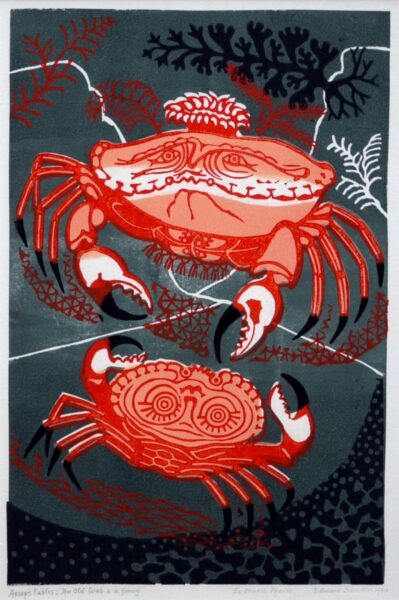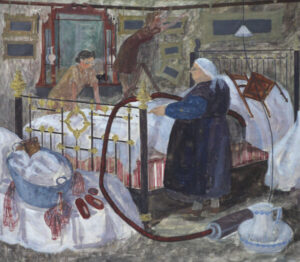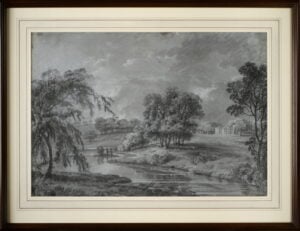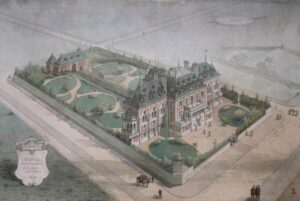Description
Bawden produced nine illustrations for Aesop’s Fables (1970), the watercolour drafts for which have survived. Bawden is at his most inventive here-he seems to find lions, eagles, foxes, crabs, peacocks, and hares so much easier to manipulate and make expressive than humans.
In his book on Bawden Malcom Yorke goes on to say that the Linocuts of Bawden’s maturity are unserpassed by any other exponent of the medium. They both simplify a subject to it’s essentials yet make it complex again by the sheer ingenuity with which he manipulates a supposedly intractable material. Inks are reduced so that transparent layers can be over-printed to make a new colour or to allow the initial one to gleam through, all of which demands the most precise alignment before the whole image is pulled together by the final printing of the outlines. Each image is recognisably in Bawden’s style, yet there are no repeated effects or mannerisms – look, for example, at how many ways he finds to portray the sky, or grass, or flowing water. Fellow artist Douglas Percy Bliss concluded: He may well be remembered, despite all his other accomplishments, as Master of the linocut.’
Edward Bawden and his Circle, published by the Antique Collectors’ Club 2007 by Malcolm Yorke.



